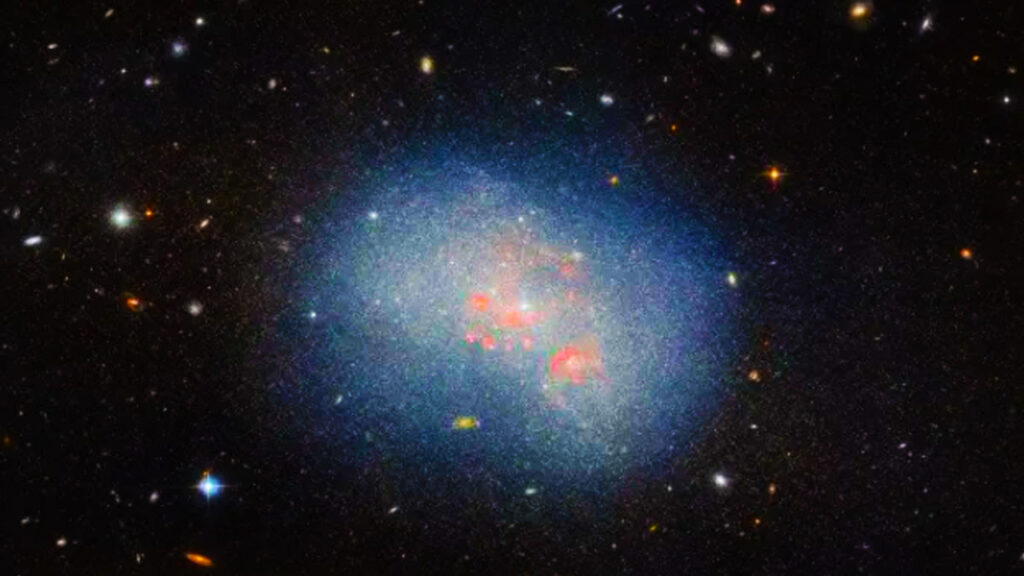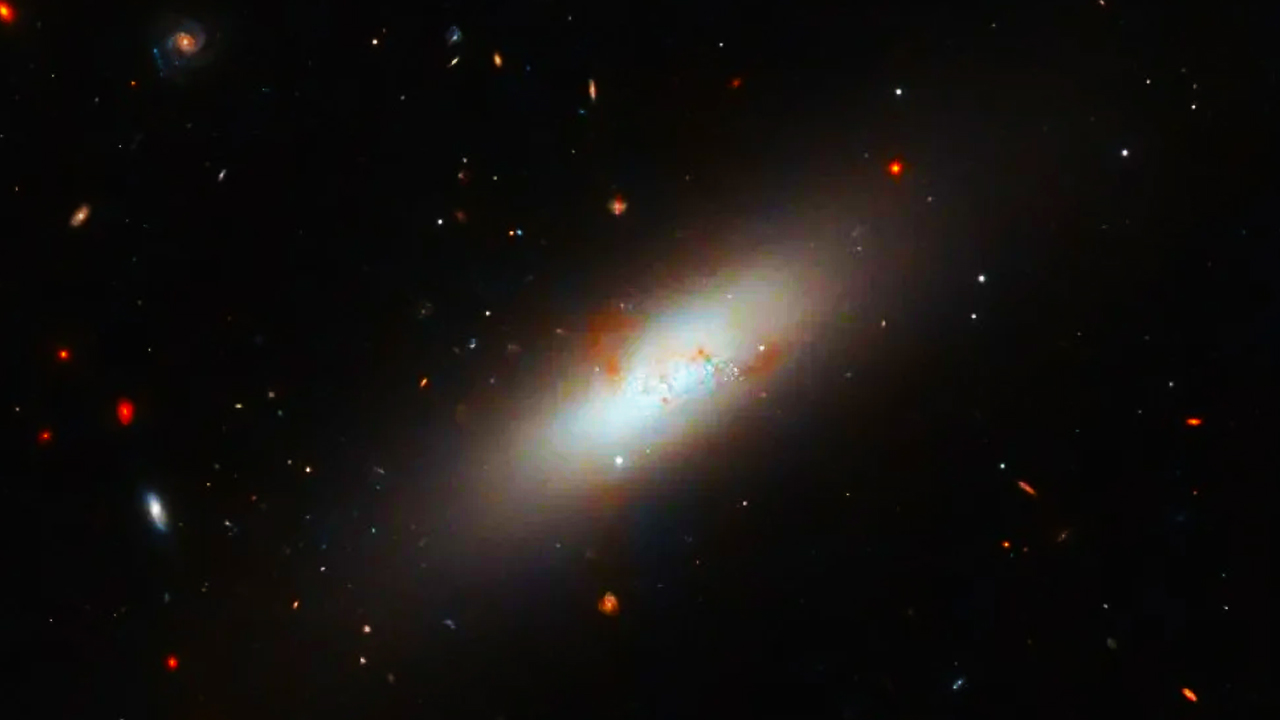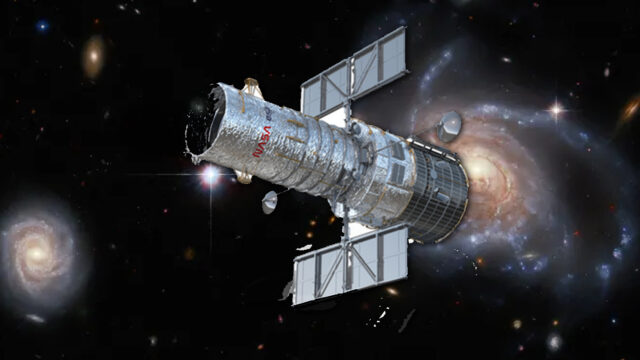The Hubble Space Telescope continues to unravel mysteries deep in the universe. In its latest images, it revealed two small dwarf galaxies, IC 3430 and NGC 5238. These galaxies are helping astronomers deepen their understanding of galaxy formation and evolution.
Two dwarf galaxies imaged by the Hubble Space Telescope: IC 3430 and NGC 5238
IC 3430, imaged by the Hubble Space Telescope, is a small dwarf galaxy located about 45 million light-years away. Not only is it classified as a dwarf galaxy due to its small size, but its shape also makes it an elliptical galaxy. While elliptical galaxies are known for their smooth and featureless appearance, the hot blue stars at the center of IC 3430 are an exception. These young stars are rare in elliptical galaxies.

Another Hubble image shows another dwarf galaxy called NGC 5238. This galaxy is closer than IC 3430, about 14.5 million light-years away. NGC 5238 has a more complex structure and is home to globular clusters, which are star clusters grouped into bright regions. Astronomers think this structure is the result of a galaxy merger in the past. This merger displaced gas inside the galaxy, causing pockets of stars to form.
The study of these small galaxies is helping astronomers develop their theories about galaxy formation and evolution. According to the Hubble scientists, one theory of galaxy evolution suggests that galaxies form in a ‘bottom-up’ hierarchical fashion. First, star clusters and small galaxies formed from gas and dark matter. Over time, gravity made these small objects into galaxy clusters and superclusters. This process explains the shapes of the largest structures we see in the universe today.
By studying small galaxies like IC 3430 and NGC 5238, the Hubble Space Telescope is making a major contribution to our understanding of how galaxies form and evolve. Such studies help us better understand the dynamics of galaxy mergers and evolution. Hubble continues to shed light on the world of science with its observations in deep space.














